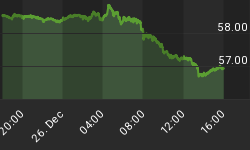The banking industry sighed a collective sigh of relief when president Trump agreed to a new set of legislation in March that eased oversight on the industry and rolled back the crippling Dodd-Frank regulations. The new law lessened rules on a large number of U.S. banks with assets below $250 billion, but preserved stricter rules for the biggest banks.
And for good reason, too.
The recent spate of scandals coming from the country’s largest banks proves that they need to be regulated more, not less. The dust has barely settled after the Department of Justice imposed a hefty $2.09-billion fine on Wells Fargo (NYSE:WFC) for the sale of residential mortgage loans that contained misstated income information. And now the company has reported that it faces U.S. inquiry after it unnecessarily foreclosed about 400 homeowners.
The bank has said that an internal review found that it failed to grant 625 customers modifications to mortgages--despite their being qualified for relief—and eventually carried out foreclosures on 400 homes.
Wells Fargo says that an error in its mortgage underwriting software led to faulty calculation of attorney fees between 2010 and 2015, thus deeming some applicants ineligible.
The bank made the disclosure in its latest 10-Q quarterly filing that it released on Friday.
Long List of Scandals
Wells Fargo spokesman Tom Goyda has apologized on behalf of the bank for the error and announced that the bank has set aside $8 million to compensate customers. Related: Are Valuations Finally Catching Up To Tech Stocks?'
But what’s disturbing is the insensitive way he pointed out that some of the 400 affected customers would still have lost their homes regardless of the modification error:
“There’s not a 100% clear cause and effect relationship between the modification denial and the ultimate foreclosure,” he said.
The improper denials represent yet another case of serious consumer harm caused by the bank’s long list of fraud, errors and glitches.
Last year, the bank acknowledged forcing 570,000 car-loan customers to pay unnecessary insurance policies. The extra expense resulted in some borrowers ultimately defaulting and having their cars repossessed. The CFPB and the OCC levied a $1-billion fine on the bank for the abuses.
But perhaps the bank’s most egregious scandal to-date was the 2016 revelation that it had opened 3.5 million dummy accounts using customer personal information and hit them with phony charges to pad its bottom line. The DoJ imposed unusually harsh penalties on Wells Fargo for that one, including a cap on expansion until it fixes its litany of problems. The bank also agreed to pay shareholders $480 million to settle a class action suit over the fake account fraud.
Fines Taking a Toll on Bottom Line
The never-ending line of scandals and fines is taking a heavy toll on the company’s bottom line.
On Friday, the lender revealed that “reasonably possible” legal charges could exceed its reserves by as much as $2.2 billion during the current quarter. Although that’s an improvement from last quarter’s $2.6 billion, it represents nearly half of its $5.2-billion net profit during the last quarter.
Consequently, the bank’s bottom line growth has been looking anemic over the past couple of years:

(Click to enlarge)
Source: Statista
WFC stock has also been lagging the industry:

(Click to enlarge)
Source: CNN Money
Still, the nice 3-percent dividend yield and massive $22-billion share buyback program have their allure and could prevent the shares from sinking.
By Alex Kimani for Safehaven.com
More Top Reads From Safehaven.com

















